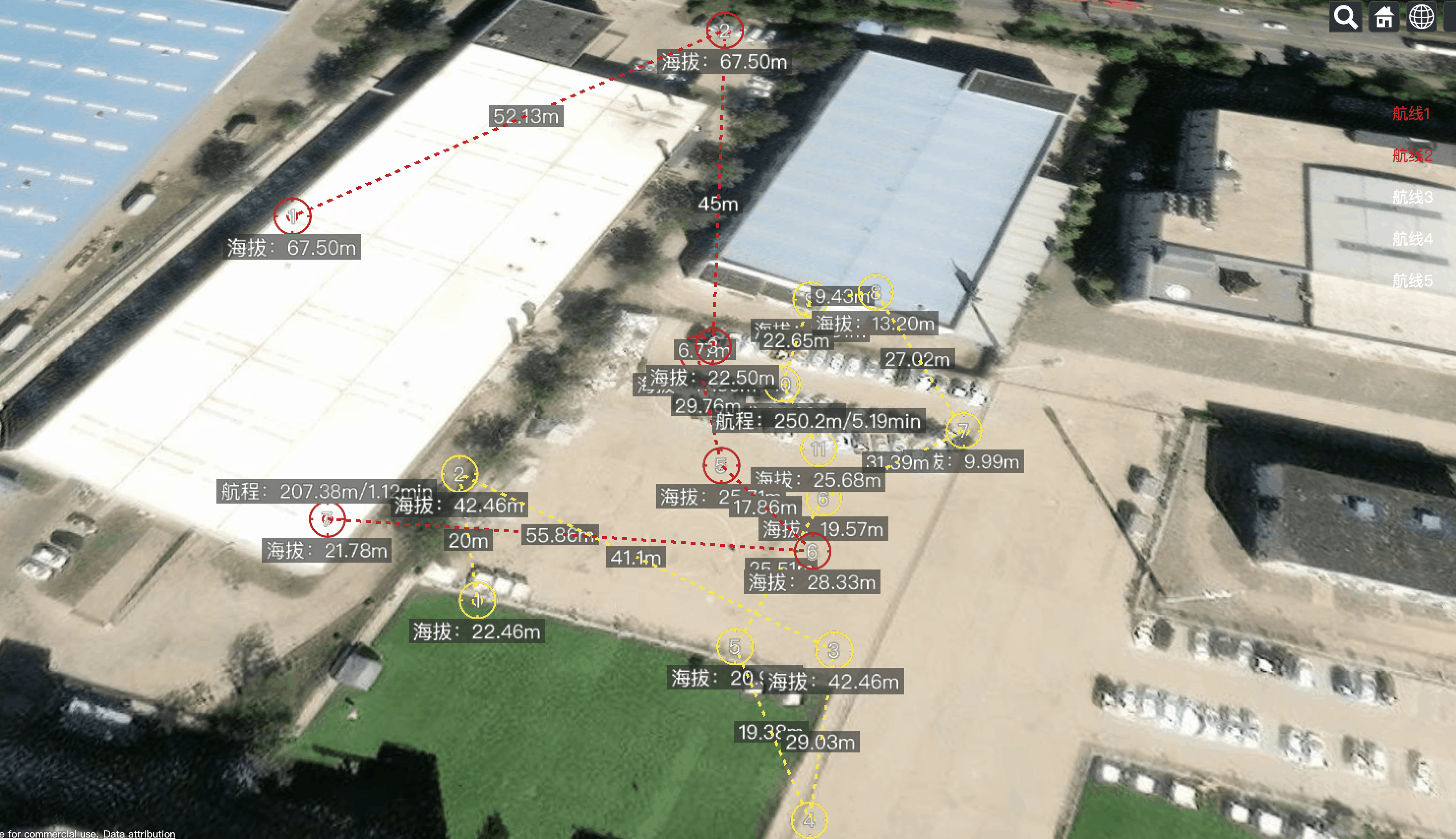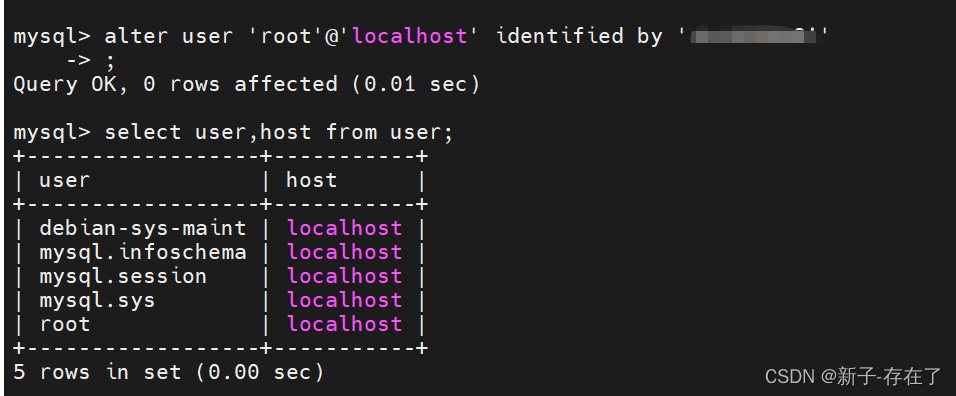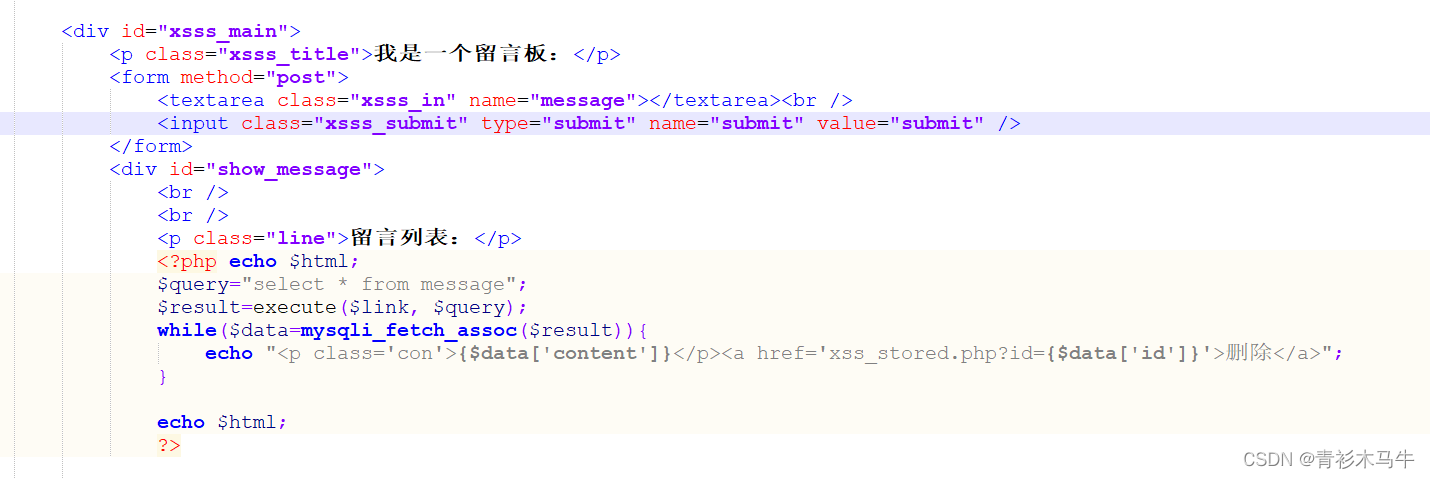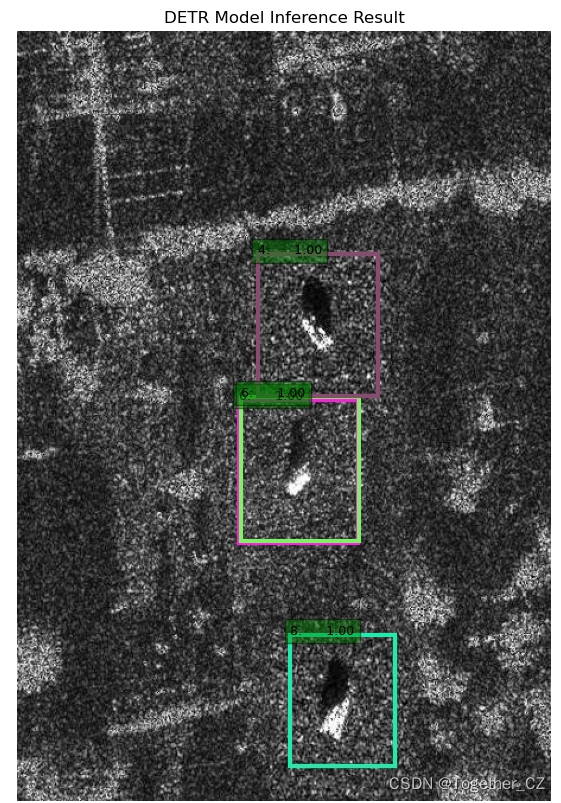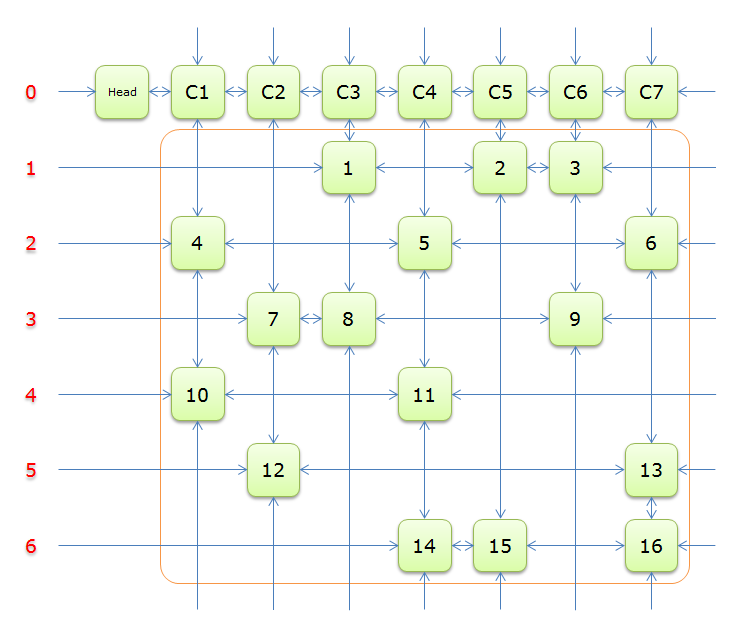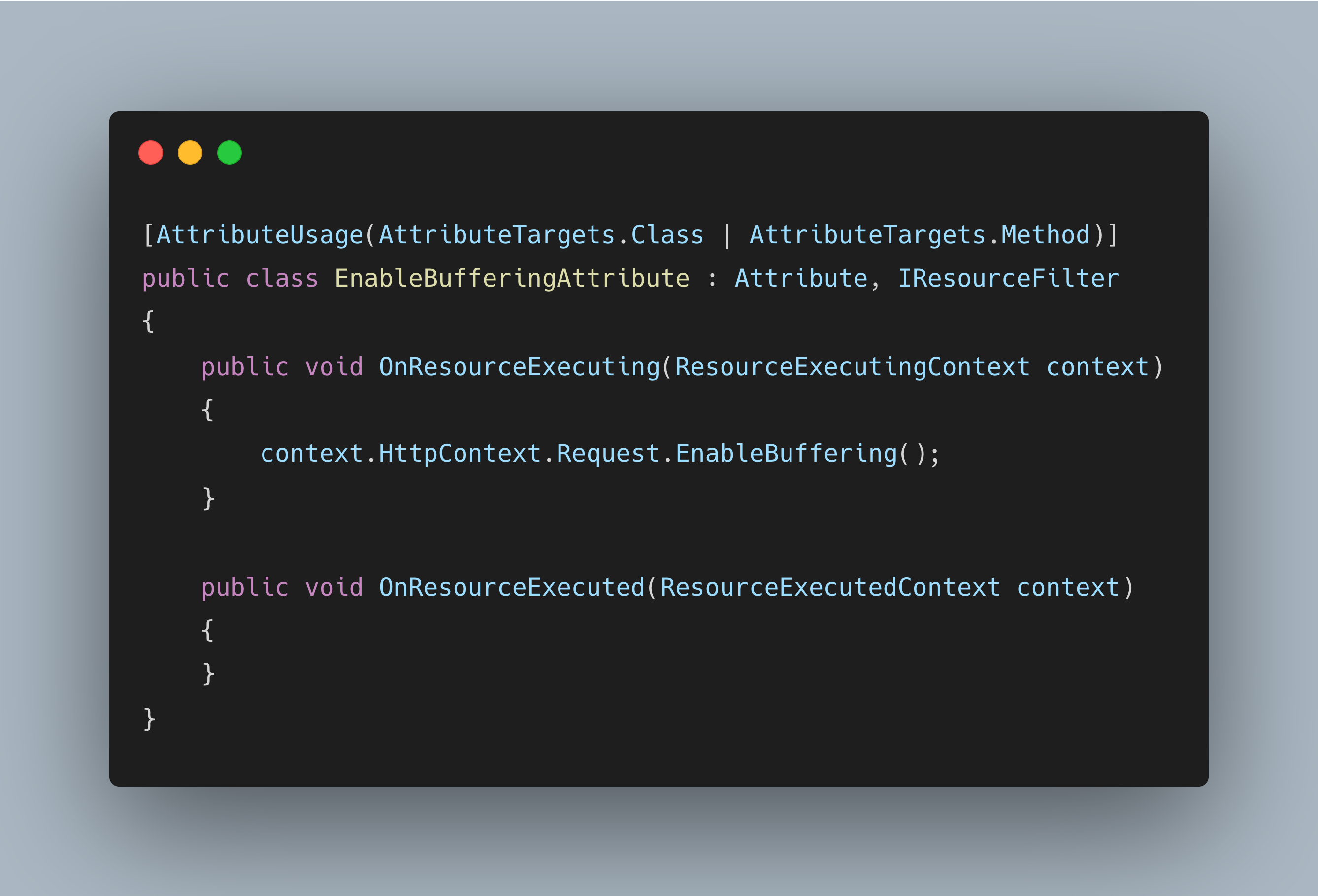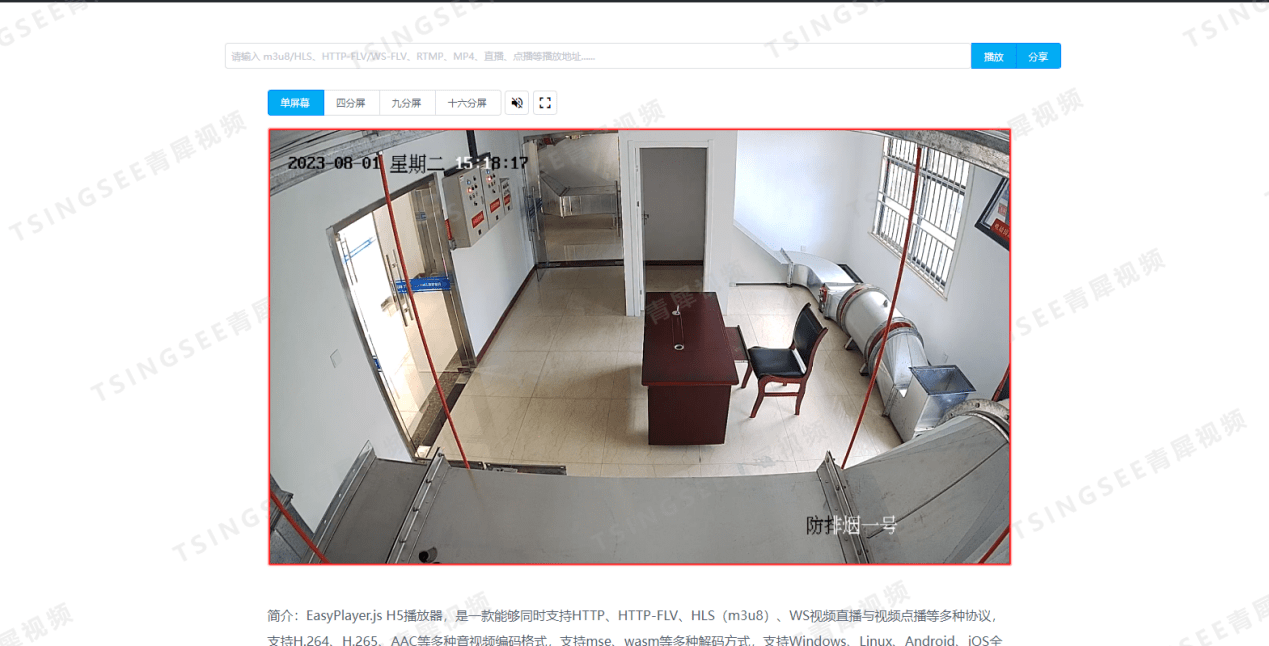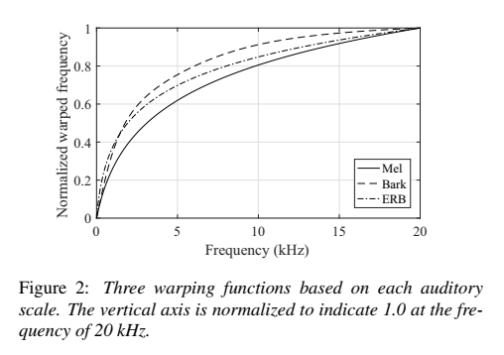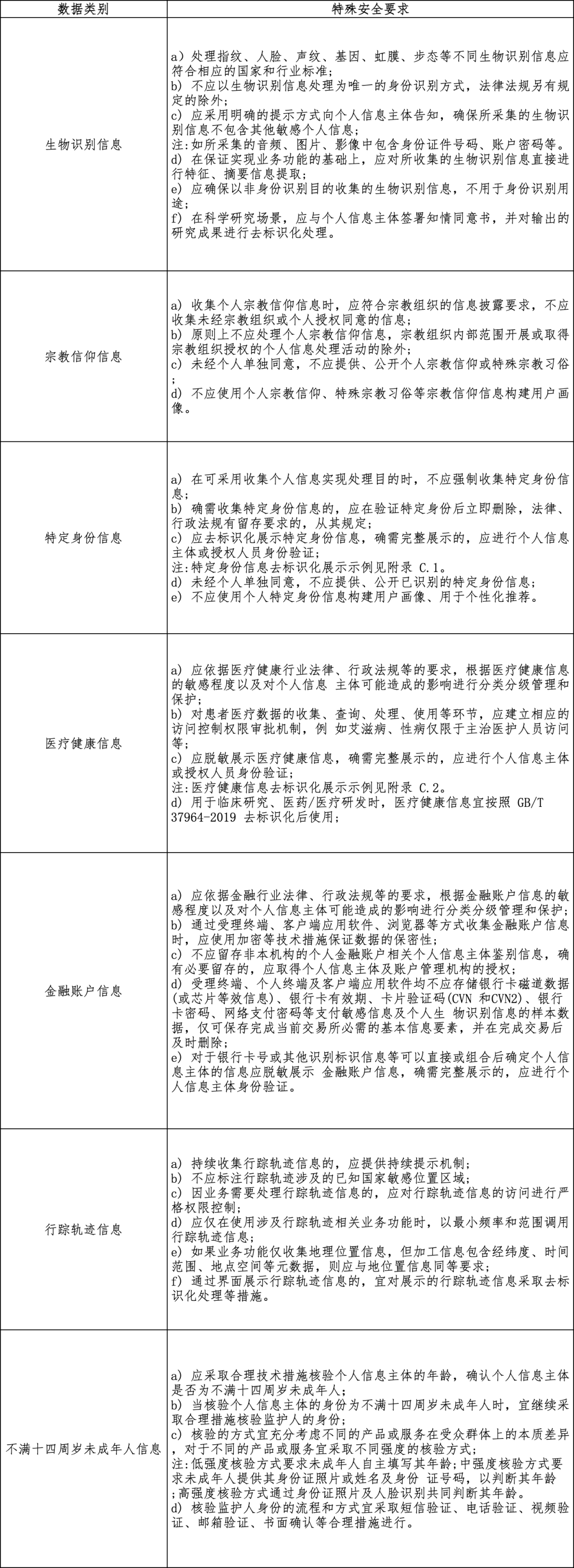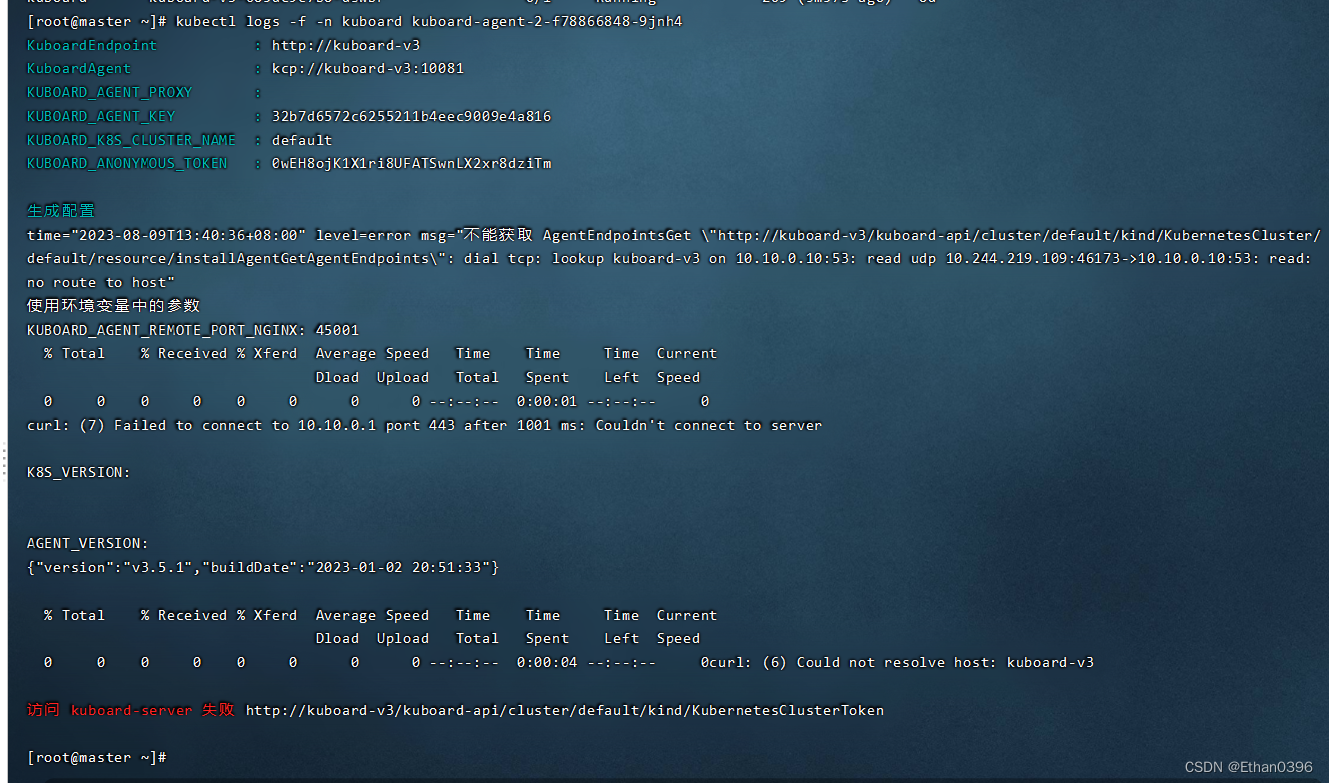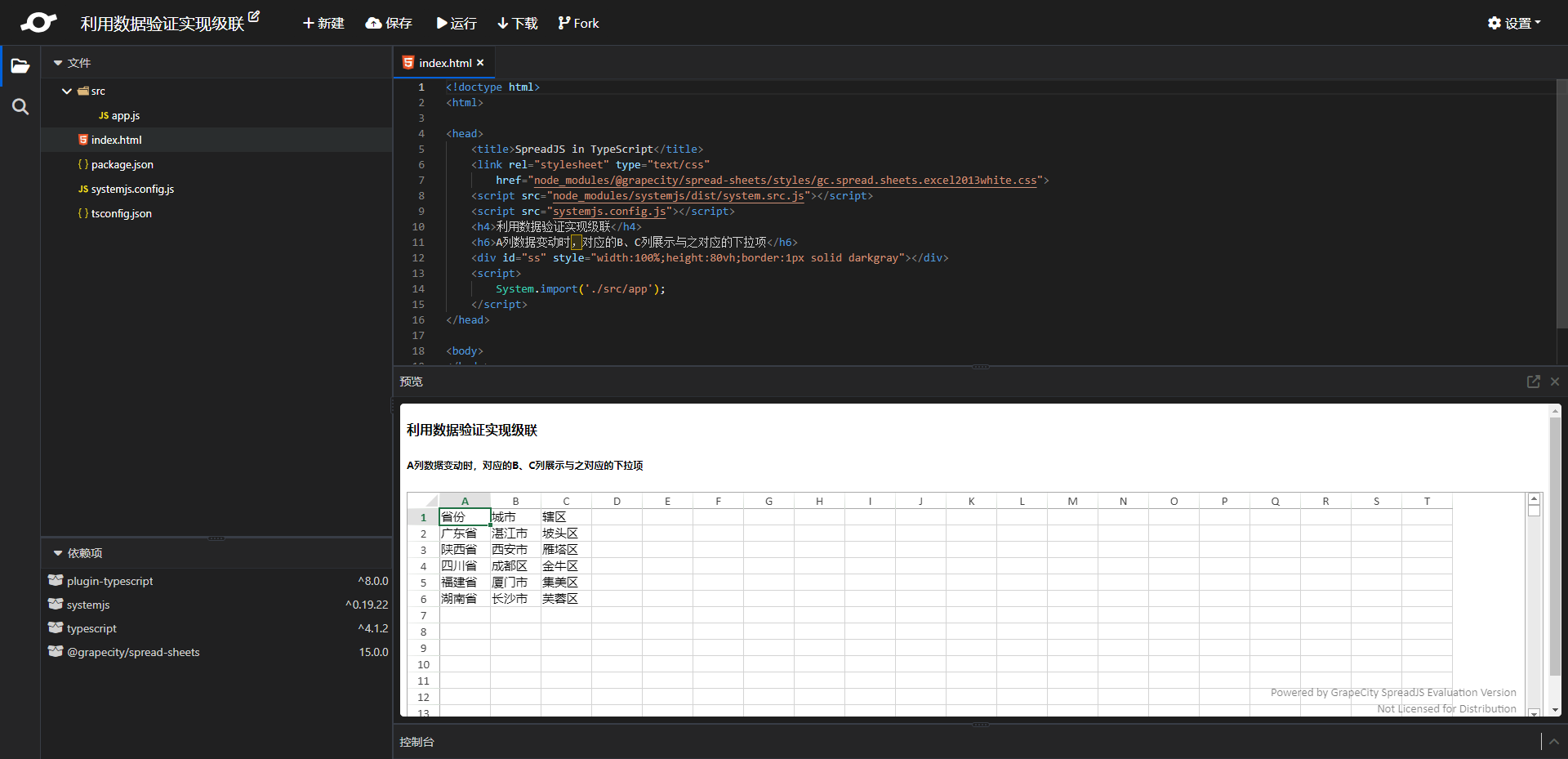文章目录
- 前言:
- 什么是RAII?
- 指针/智能指针:
- 使用智能指针管理内存资源:
- `unique_ptr`的使用:
- 自定义删除器:
- `shared_ptr`的使用:
- `shared_ptr`指向同一个对象的不同成员:
- 自定义删除函数:
- 循环引用的问题:
- `weak_ptr`引入解决循环引用的问题:
- 指针作为函数参数传递:
- 利用栈特性自动释放锁:
- 手动实现`RAII`管理`mutex`资源:
- C++11中`RAII`管理互斥资源 `lock_guard` :
- c++11的`unique_lock`独占式锁包装器:
- C++14的`shared_lock`共享锁包装器:
- C++17的`scoped_lock`免死锁`RAII`封装器:
- 重载`new`和`delete`运算符:
- 为何要重载`new`和`delete`?
- 重载全局`new`和`delete`运算符:
- 重载类成员`new`和`delete`运算符:
- 分配器:
- `allocator`:
- 自定义分配器:
- 未初始化内存算法:
- 限制栈中创建对象, 限制调用 delete 销毁对象 :
- c++多线程从原理到线程池实现:
- 多线程概用途:
- c++11多线程基础:
- 线程等待与分离:
- `thread`的参数传递:
- 线程入口函数:
- 普通函数:
- 类成员函数:
- lambda表达式:
- `call_once`多线程调用时仅调用一次:
- 多线程通信和同步:
- 线程状态说明:
- 竞争状态和临界区:
- 互斥体和锁:
- `try_lock(std::mutex)`尝试加锁:
- `try_lock_for(std::timed_mutex)`超时锁:
- 递归锁(可重入锁)`recursive_mutex` 和`recursive_timed_mutex` 用于业务组合:
- 共享锁shared_mutex:
- 利用栈自动释放锁:
- 条件变量:
- 不同线程通信方式实现线程池:
- 基于互斥锁和`sleep`实现:
- 基于条件变量实现:
- 智能指针管理和异步获取结果的实现:
- lambda表达式的实现原理:
- c++11中call_once函数的使用:
前言:
- c++程序大部分的问题,都是内存调试的问题。
- c++新特性中,智能指针和内存池使用时,如果使用不熟练也会存在很大问题。
什么是RAII?
RAII(Resource Acquisition is Initialization)资源获取即初始化,即构造函数中申请分配资源,在析构函数中释放资源。因为C++的语言机制保证了,当一个对象创建时自动调用构造函数,当对象超出作用域时会自动调用析构函数。所以在RAII的指导下,我们应该使用类来管理资源并将资源和对象的生命周期绑定,从而可将局部类对象生命周期交由操作系统来管理无需人工介入,避免了忘记释放资源而导致的死锁或内存泄露。
指针/智能指针:
使用智能指针管理内存资源:
智能指针(std::shared_ptr、std::unique_ptr)即RAII最具代表的实现,使用智能指针可以实现自动的内存管理,再也不需要担心忘记delete造成的内存泄漏。毫不夸张的讲,有了智能指针,代码中几乎不需要再出现delete了。
unique_ptr的使用:
独占所有权并在unique_ptr离开作用域时释放该对象的智能指针。
- 管理单个对象,如以 new 分配;
- 管理动态分配的对象数组,如以 new[] 分配;
- 可移动构造
Move Constructible和移动赋值Move Assignable, 但不可拷贝构造Copy Constructible或拷贝赋值Copy Assignable。
注意:两个unique_ptr之间的需要通过move进行移动拷贝或移动复制,不建议用普通指针初始化unique_ptr避免两者中任一一个释放造成另一个非法访问。
自定义删除器:
通过函数表达式或lambda表达式释放unique_ptr指向的内存空间。
#include <iostream>
#include <memory>
#include <functional>struct Foo
{Foo() { std::cout << "Foo...\n"; }~Foo() { std::cout << "~Foo...\n"; }
};struct D
{void bar() { std::cout << "Call deleter D::bar()...\n"; }void operator()(Foo* p) const{std::cout << "Call delete for Foo object...\n";delete p;}
};int main()
{std::unique_ptr<Foo, D> up(new Foo(), D());D& del = up.get_deleter();del.bar();// 注意:这里会去调用`void D::operator()(Foo* p) const`函数,会导致up指向的内存被释放//,但unique_ptr出作用域还会再释放一次从而导致内存“二次释放”的问题!!!,除非你将它的“所有权剥夺”。del(up.get());up.release();std::cout << "Custom lambda-expression deleter demo\n";{std::unique_ptr<Foo, std::function<void(Foo*)>> p(new Foo, [](Foo* ptr) {std::cout << "destroying from a custom deleter...\n";delete ptr;}); // p 占有 Foo 对象所在的内存 } // 调用上述 lambda 并销毁 Foo 对象
}
shared_ptr的使用:
共享所有权(即多个shared_ptr指向同一对象),并在指向的内存块的引用计数为0时,释放该内存块。

- 可拷贝构造
Copy Constructible、可拷贝赋值Copy Assignable; - 数据访问非线程安全;
- shared_ptr 的控制块是线程安全,即引用计数是线程安全的;
shared_ptr指向同一个对象的不同成员:
#include <iostream>
#include <memory>
using namespace std;class A
{
public:int index1;int index2;
};int main()
{shared_ptr<A> shptr1(new A);shared_ptr<int> shptr2(shptr1, &(shptr1->index1));shared_ptr<int> shptr3(shptr1, &(shptr1->index2));cout << shptr1.use_count() << endl;return 0;
}
自定义删除函数:
通过可调用对象(即函数对象、仿函数或lambda表达式)释放shared_ptr指向的内存空间。
#include <memory>
#include <iostream>struct Foo {Foo() { std::cout << "Foo...\n"; }~Foo() { std::cout << "~Foo...\n"; }
};struct D { void operator()(Foo* p) const {std::cout << "Call delete from function object...\n";delete p;}
};void Deleter(Foo* p)
{std::cout << "Call delete from function object...\n";delete p;
}int main()
{std::shared_ptr<Foo> sh1(new Foo, D());std::shared_ptr<Foo> sh2(new Foo, [](auto p) {std::cout << "Call delete from lambda...\n";delete p;});std::shared_ptr<Foo> sh3(new Foo, Deleter);return 0;
}
循环引用的问题:
#include <iostream>
#include <memory>
using namespace std;class B;
class A
{
public:A() { cout << "A::A()" << endl; }~A() { cout << "A::~A()" << endl; }shared_ptr<B> b;
};class B
{
public:B() { cout << "B::B()" << endl; }~B() { cout << "B::~B()" << endl; }shared_ptr<A> a;
};int main()
{{auto aObj = make_shared<A>(); // aObj指向的内存块的引用计数为1auto bObj = make_shared<B>(); // bObj指向的内存块的引用计数为1aObj->b = bObj; // bObj指向的内存块的引用计数为2bObj->a = aObj; // aObj指向的内存块的引用计数为2cout << aObj.use_count() << ", " << bObj.use_count() << endl;}// 此时,出现了问题,aObj和bObj两个指向的内存块的引用计数均为1,并不能使两者指向的内存块释放!!!return 0;
}
weak_ptr引入解决循环引用的问题:
expired检查被引用的对象是否已删除;lock创建/管理被引用的对象的shared_ptr;
注意::weak_ptr无法直接访问其指向的对象。要访问对象,必须先将weak_ptr转换为shared_ptr。
#include <iostream>
#include <memory>
using namespace std;/* ............. 使用`weak_ptr`,打破了循环引用,避免了内存泄漏 ............. */
class B;
class A
{
public:A() { cout << "A::A()" << endl; }~A() { cout << "A::~A()" << endl; }void Do(){cout <<"A::Do(), b.use_count() = "<< b.use_count() << endl; if (!b.expired()){auto b_ = b.lock(); // 复制一个共享智能指针 引用计数+1cout << "b指向的内存块未被释放" << endl;}cout << "A::Do(), b.use_count() = " << b.use_count() << endl;} //shared_ptr<B> b;weak_ptr<B> b;
};
class B
{
public:B() { cout << "B::B()" << endl; }~B() { cout << "B::~B()" << endl; }//shared_ptr<A> a;weak_ptr<A> a;
};int main()
{auto aObj = make_shared<A>(); // =1auto bObj = make_shared<B>(); // =1aObj->b = bObj; // =1cout << "aObj->b = bObj, bObj.use_count()=" << bObj.use_count() << endl;aObj->Do(); bObj->a = aObj; // +1 =2cout << "bObj->a = aObj, aObj.use_count()=" << aObj.use_count() << endl;return 0;
}
// 当B对象使用weak_ptr指向A对象时,A对象的引用计数不会增加。因此,在aObj和bObj超出作用域时,它们的析构函数会被调用,导致A对象和B对象的引用计数各自减1。
// 1)A对象的引用计数变为0,它将被自动销毁。
// 2)B对象的成员变量a_ptr不再指向任何对象,因此B对象的引用计数也降为0,它也将被自动销毁
指针作为函数参数传递:
-
传递输入内存,需要提供内存大小,并设置为
const;#include <iostream> using namespace std;void func1(const char* data, size_t size) { cout << size << "," << sizeof(data) << endl; }void func2(const char data[]) { cout << sizeof(data) << endl; }template <class Ty, size_t Size> void testMemArr(Ty(&data)[Size]) { cout << sizeof(data) << endl; }int main() {char data[] = "hello";func1(data, sizeof(data));func2(data);testMemArr(data);return 0; } -
传递输出内存,也需要提供内存大小作为返回值,防止内存溢出。
#include <iostream> using namespace std;// 返回值:函数内部给其指向的内存空间分配的堆空间的大小 size_t func(char** data) { int size = 1024;*data = new char[size]; return size; }int main() {char* data = nullptr;cout << func(&data) << endl; delete data; data = nullptr;return 0; } -
unique_ptr作为参数和返回值:特别关注作为返回值时,会调用移动构造函数。#include <iostream> #include <memory> using namespace std;unique_ptr<int> func(unique_ptr<int> data) {cout << *data <<endl;unique_ptr<int> data_(new int(10));// 这里编译器会进行优化,如果返回值支持move则编译器会自动调用move进行移动拷贝构造,否则调用拷贝构造。return data_; }int main() {unique_ptr<int> data1(new int(12));auto data2 = func(std::move(data1)); cout << *data2 << endl;return 0; } -
shared_ptr作为参数和返回值:特别关注作为返回值时,会调用移动构造函数。#include <iostream> #include <memory> using namespace std;shared_ptr<int> func(shared_ptr<int> data) {cout << *data <<endl;shared_ptr<int> data_(new int(10));// 这里编译器会进行优化,如果返回值支持move则编译器会自动调用move进行移动拷贝构造,否则调用拷贝构造。return data_; }int main() {shared_ptr<int> data1(new int(12));//auto data2 = func(std::move(data1)); auto data2 = func(data1); cout << *data2 << endl;cout << data1.use_count() << ", " << data2.use_count() << endl;return 0; }
利用栈特性自动释放锁:
手动实现RAII管理mutex资源:
class XMutex
{
public:XMutex(mutex& mtx) : mtx_(mtx){cout << "Lock" << endl;mtx_.lock();}~XMutex(){cout << "UnLock" << endl;mtx_.unlock();}
private:std::mutex& mtx_;
};static std::mutex mtx;void TestMtx()
{// 这里通过XMutex的局部类对象,可实现自动的释放锁,即RAII的思想(局部对象来管理资源,同时局部对象的生命周期由操作系统管理)XMutex lock(mtx);// ...
}
C++11中RAII管理互斥资源 lock_guard :
C++11的lock_guard 实现,基于作用域的互斥体所有权包装器。
/* _Mutex可为:mutex互斥锁、shared_mutex共享锁、timed_mutex超时锁、recursive可重入的递归锁 */
template <class _Mutex>
class lock_guard
{
public:using mutex_type = _Mutex;explicit lock_guard(_Mutex& _Mtx) : _MyMutex(_Mtx) // construct and lock { MyMutex.lock(); } lock_guard(_Mutex& _Mtx, adopt_lock_t) : _MyMutex(_Mtx) // construct but don't lock{ } ~lock_guard() noexcept // destructor and unlock a mutex{ _MyMutex.unlock(); }// Disable copy construction and copy replicationlock_guard(const lock_guard&) = delete;lock_guard& operator=(const lock_guard&) = delete;
};
- 通过
{}控制锁的临界区; - C++11中,
adopt_lock类型为adopt_lock_t,假设调用方已拥有互斥的所有权;
#include <iostream>
#include <thread>
#include <mutex>
using namespace std;static mutex mtx;void ThreadMainMtx(int i)
{mtx.lock();{// 已经拥有锁,不locklock_guard<mutex> lock(mtx, adopt_lock);// 出作用域,释放锁}for (;;){{// lock_guard用来自动管理互斥量的生命周期,在作用域内通过构造函数给关联的互斥量加锁,离开作用域后通过析构函数给关联的互斥量解锁。这有助于避免忘记解锁、死锁等问题出现。lock_guard<mutex> lock(mtx); cout << i << "[in]" << endl;this_thread::sleep_for(1000ms); }// 等待内核调度其他线程抢占资源 this_thread::sleep_for(10ms); // 等待10ms是为了避免该线程一直占用CPU资源,导致其他线程没有机会执行 }
}int main(int argc, char* argv[])
{for (int i = 0; i < 10; ++i){thread th(ThreadMainMtx, i);th.detach();}while (1){ } // 避免主线程退出,造成子线程获取全局静态锁mtx失败,而导致的程序崩溃。return 0;
}
c++11的unique_lock独占式锁包装器:
C++11的unique_lock实现,可移动的互斥体所有权包装器。
template<class _Mutex>
class unique_lock
{
public:typedef _Mutex mutex_type;// default construct unique_lock() : _Pmtx(nullptr), _Owns(false) noexcept{ }// construct and lockexplicit unique_lock(_Mutex& _Mtx) : _Pmtx(_STD addressof(_Mtx)), _Owns(true){ _Pmtx->lock(); }// construct and assume already lockedunique_lock(_Mutex& _Mtx, adopt_lock_t) : _Pmtx(_STD addressof(_Mtx)), _Owns(true){ }// construct but don't lock unique_lock(_Mutex& _Mtx, defer_lock_t) : _Pmtx(_STD addressof(_Mtx)), _Owns(false) noexcept { }// construct and try to lockunique_lock(_Mutex& _Mtx, try_to_lock_t) : _Pmtx(_STD addressof(_Mtx)), _Owns(_Pmtx->try_lock()){ }// construct and lock with timeout/*template<class _Rep, class _Period>unique_lock(_Mutex& _Mtx, const chrono::duration<_Rep, _Period>& _Rel_time) : _Pmtx(_STD addressof(_Mtx)), _Owns(_Pmtx->try_lock_for(_Rel_time)) */template<class _Clock, class _Duration>unique_lock(_Mutex& _Mtx, const chrono::time_point<_Clock, _Duration>& _Abs_time) : _Pmtx(_STD addressof(_Mtx)), _Owns(_Pmtx->try_lock_until(_Abs_time)){ } // try to lock until _Abs_timeunique_lock(_Mutex& _Mtx, const xtime *_Abs_time) : _Pmtx(_STD addressof(_Mtx)), _Owns(false){ _Owns = _Pmtx->try_lock_until(_Abs_time);}unique_lock(unique_lock&& _Other) : _Pmtx(_Other._Pmtx), _Owns(_Other._Owns) noexcept { _Other._Pmtx = nullptr;_Other._Owns = false;} unique_lock& operator=(unique_lock&& _Other){ // different, move contentsif (this != _STD addressof(_Other)){ if (_Owns){_Pmtx->unlock();} _Pmtx = _Other._Pmtx;_Owns = _Other._Owns;_Other._Pmtx = nullptr;_Other._Owns = false;}return (*this);}// clean up~unique_lock() noexcept{ if (_Owns){_Pmtx->unlock();} }// Disable Copy construction and Copy assignmentunique_lock(const unique_lock&) = delete;unique_lock& operator=(const unique_lock&) = delete;// lock the mutexvoid lock(){ _Validate();_Pmtx->lock();_Owns = true;}// try to unlock the mutexvoid unlock(){ if (!_Pmtx || !_Owns){_THROW(system_error(_STD make_error_code(errc::operation_not_permitted)));} _Pmtx->unlock();_Owns = false;}// try to lock the mutex_NODISCARD bool try_lock(){ _Validate();_Owns = _Pmtx->try_lock();return (_Owns);} // try to lock mutex for _Rel_timetemplate<class _Rep, class _Period>_NODISCARD bool try_lock_for(const chrono::duration<_Rep, _Period>& _Rel_time){ _Validate();_Owns = _Pmtx->try_lock_for(_Rel_time);return (_Owns);}/*// try to lock mutex until _Abs_timetemplate<class _Clock, class _Duration>_NODISCARD bool try_lock_until(const chrono::time_point<_Clock, _Duration>& _Abs_time)*/// try to lock the mutex until _Abs_time_NODISCARD bool try_lock_until(const xtime *_Abs_time){ _Validate();_Owns = _Pmtx->try_lock_until(_Abs_time);return (_Owns);} // swap with _Othervoid swap(unique_lock& _Other) noexcept{ _STD swap(_Pmtx, _Other._Pmtx);_STD swap(_Owns, _Other._Owns);}// disconnect_Mutex* release() noexcept{ _Mutex *_Res = _Pmtx;_Pmtx = nullptr;_Owns = false;return (_Res);}// return true if this object owns the lock/*_NODISCARD bool owns_lock() const noexcept*/explicit operator bool() const noexcept{ return (_Owns);} // return pointer to managed mutex_NODISCARD _Mutex *mutex() const noexcept{ return (_Pmtx);}
private:_Mutex* _Pmtx;bool _Owns;// check if the mutex can be lockedvoid _Validate() const{ if (!_Pmtx){_THROW(system_error(_STD make_error_code(errc::operation_not_permitted)));} if (_Owns){_THROW(system_error(_STD make_error_code(errc::resource_deadlock_would_occur)));} }
};
-
支持临时释放锁
unlock; -
支持
adopt_lock(已拥有锁,不加锁,出栈区会释放);{ mtx.lock();// ...// 已拥有锁,不加锁,出栈区解锁 unique_lock<mutex> lock(mtx, adopt_lock); // ... } -
支持
defer_lock(延后加锁,不拥有,出栈区不释放);{// 延迟加锁,不拥有锁,出栈区不释放unique_lock<mutex> lock(mtx, defer_lock);// ... // 加锁,退出栈区解锁lock.lock(); } -
支持
try_to_lock尝试获得互斥的所有权而不阻塞 ,获取失败退出栈区不会释放;通过
owns_lock()函数判断,是否加锁成功;staticmutex mtx;{// ...// 尝试加锁,不阻塞,失败不拥有锁unique_lock<mutex> lock(mtx, try_to_lock);if (lock.owns_lock()) {cout << "owns lock" << endl;} else {cout << "not owns lock" << endl;} // ... } -
支持超时参数,超时不拥有锁;
C++14的shared_lock共享锁包装器:
C++14的shared_lock实现,可移动的“共享”互斥体所有权封装器。
template<class _Mutex> // shareable lock <==> std:shared_mutex
class shared_lock
{
public:typedef _Mutex mutex_type;// default constructshared_lock() : _Pmtx(nullptr), _Owns(false) noexcept { }// construct with mutex and lock sharedexplicit shared_lock(mutex_type& _Mtx) : _Pmtx(_STD addressof(_Mtx)), _Owns(true){ _Mtx.lock_shared(); }// construct with unlocked mutexshared_lock(mutex_type& _Mtx, defer_lock_t) : _Pmtx(_STD addressof(_Mtx)), _Owns(false) noexcept{ }// construct with mutex and try to lock sharedshared_lock(mutex_type& _Mtx, try_to_lock_t) : _Pmtx(_STD addressof(_Mtx)), _Owns(_Mtx.try_lock_shared()){ }// construct with mutex and adopt ownershipshared_lock(mutex_type& _Mtx, adopt_lock_t) : _Pmtx(_STD addressof(_Mtx)), _Owns(true){ }/*// construct with mutex and try to lock for relative timetemplate<class _Rep, class _Period>shared_lock(mutex_type& _Mtx, const chrono::duration<_Rep, _Period>& _Rel_time) : _Pmtx(_STD addressof(_Mtx)), _Owns(_Mtx.try_lock_shared_for(_Rel_time))*/// construct with mutex and try to lock until absolute timetemplate<class _Clock, class _Duration>shared_lock(mutex_type& _Mtx, const chrono::time_point<_Clock, _Duration>& _Abs_time) : _Pmtx(_STD addressof(_Mtx)), _Owns(_Mtx.try_lock_shared_until(_Abs_time)){ } // destroy the lock~shared_lock() noexcept{ if (_Owns){_Pmtx->unlock_shared();}}// construct by moving _Othershared_lock(shared_lock&& _Other) : _Pmtx(_Other._Pmtx), _Owns(_Other._Owns) noexcept{ _Other._Pmtx = nullptr;_Other._Owns = false;}// copy by moving _Rightshared_lock& operator=(shared_lock&& _Right) noexcept{ if (_Owns){_Pmtx->unlock_shared();} _Pmtx = _Right._Pmtx;_Owns = _Right._Owns;_Right._Pmtx = nullptr;_Right._Owns = false;return (*this);}// Disable Copy construct and Copy shared_lock(const shared_lock&) = delete;shared_lock& operator=(const shared_lock&) = delete;// lock the mutexvoid lock(){ _Validate();_Pmtx->lock_shared();_Owns = true;} // try to lock the mutex_NODISCARD bool try_lock(){ _Validate();_Owns = _Pmtx->try_lock_shared();return (_Owns);}/*// try to lock the mutex for _Rel_timetemplate<class _Rep, class _Period>_NODISCARD bool try_lock_for(const chrono::duration<_Rep, _Period>& _Rel_time)*/// try to lock the mutex until _Abs_timetemplate<class _Clock, class _Duration>_NODISCARD bool try_lock_until(const chrono::time_point<_Clock, _Duration>& _Abs_time){ _Validate();_Owns = _Pmtx->try_lock_shared_for(_Rel_time);return (_Owns);} void unlock(){ // try to unlock the mutexif (!_Pmtx || !_Owns){_THROW(system_error(_STD make_error_code(errc::operation_not_permitted)));} _Pmtx->unlock_shared();_Owns = false;}// MUTATEvoid swap(shared_lock& _Right) noexcept{ // swap with _Right_STD swap(_Pmtx, _Right._Pmtx);_STD swap(_Owns, _Right._Owns);}// release the mutexmutex_type* release() noexcept{ _Mutex *_Res = _Pmtx;_Pmtx = nullptr;_Owns = false;return (_Res);}// return true if this object owns the lock_NODISCARD bool owns_lock() const noexcept{ return (_Owns);} explicit operator bool() const noexcept{ return (_Owns);}// return pointer to managed mutex_NODISCARD mutex_type *mutex() const noexcept{ return (_Pmtx);}
private:_Mutex* _Pmtx;bool _Owns;// check if the mutex can be lockedvoid _Validate() const{ if (!_Pmtx){_THROW(system_error(_STD make_error_code(errc::operation_not_permitted)));} if (_Owns){_THROW(system_error(_STD make_error_code(errc::resource_deadlock_would_occur)));} }
};
// 共享锁
static shared_timed_mutex st_mtx; { // ...// 读取锁,即为共享锁{// 调用共享锁shared_lock<shared_timed_mutex> lock(st_mtx);// ... read data ...// 出栈区,释放共享锁}// 写入锁,即为互斥锁{ unique_lock<shared_timed_mutex> lock(st_mtx);// ... write data ... }// ...
}
C++17的scoped_lock免死锁RAII封装器:
C++17的scoped_lock实现,用于多个互斥体的免死锁 RAII 封装器,类似lock。
// class with destructor that unlocks mutexes
template<class... _Mutexes>
class scoped_lock
{
public:// construct and lockexplicit scoped_lock(_Mutexes&... _Mtxes) : _MyMutexes(_Mtxes...){ _STD lock(_Mtxes...);}// construct but don't lockexplicit scoped_lock(adopt_lock_t, _Mutexes&... _Mtxes) : _MyMutexes(_Mtxes...){ }// unlock all~scoped_lock() noexcept{ _For_each_tuple_element(_MyMutexes, [](auto& _Mutex) noexcept { _Mutex.unlock(); });}scoped_lock(const scoped_lock&) = delete;scoped_lock& operator=(const scoped_lock&) = delete;
private:tuple<_Mutexes&...> _MyMutexes;
};// specialization for a single mutex
template<class _Mutex>
class scoped_lock<_Mutex>
{
public:typedef _Mutex mutex_type;// construct and lockexplicit scoped_lock(_Mutex& _Mtx) : _MyMutex(_Mtx){ _MyMutex.lock();}// construct but don't lockexplicit scoped_lock(adopt_lock_t, _Mutex& _Mtx) : _MyMutex(_Mtx){ }// unlock~scoped_lock() noexcept{ _MyMutex.unlock();}scoped_lock(const scoped_lock&) = delete;scoped_lock& operator=(const scoped_lock&) = delete;
private:_Mutex& _MyMutex;
};// specialization for no mutexes
template<>
class scoped_lock<>
{
public:explicit scoped_lock(){ /* no effects */ }explicit scoped_lock(adopt_lock_t){ /* no effects */ }~scoped_lock() noexcept{ /* no effects */ }scoped_lock(const scoped_lock&) = delete;scoped_lock& operator=(const scoped_lock&) = delete;
};
死锁的情况:
#include <iostream>
#include <mutex>
#include <thread>
using namespace std;static mutex mtx1, mtx2;// testThread1和testThread2线程中,加锁顺序不一致,导致出现了“死锁”
void testThread1()
{ mtx1.lock();cout << this_thread::get_id() << ", mtx1 has been locked" << endl;mtx2.lock();cout << this_thread::get_id() << ", mtx2 has been locked " << endl;// ...mtx1.unlock();mtx2.unlock();
}
void testThread2()
{mtx2.lock();cout << this_thread::get_id() << ", mtx2 has been locked" << endl;mtx1.lock();cout << this_thread::get_id() << ", mtx1 has been locked " << endl;// ...mtx2.unlock();mtx1.unlock();
}int main()
{thread th1(testThread1);thread th2(testThread2);th1.join();th2.join();return 0;
}
C++17的scoped_lock实现,用于多个互斥体的免死锁 RAII 封装器,类似lock。
// c++17的scoped_lock,类似于c++11的lock,保证了锁顺序的一致,避免“死锁”
static mutex mtx1, mtx2;// C++11 lock(...MutexType) 需要手动释放锁资源
{lock(mtx1, mtx2);mtx1.unlock();mtx2.unlock();
}// C++17 scoped_lock(...MutexType) 可实现RAII管理资源,即局部对象(局部对象由操作系统管理)来管理资源
{scoped_lock lock(mtx1, mtx2);
}
重载new和delete运算符:
为何要重载new和delete?
- 监测内存创建销毁;
- 统计和监控泄漏;
- 内存对齐的处理;
- 特定应用:例如多进程内存共享;
重载全局new和delete运算符:
#include <iostream>
using namespace std;void* operator new(size_t size)
{cout << "perator new: " << size << " Bytes" << endl;void* mem = malloc(size); if (!mem){throw std::bad_alloc();} return mem;
}
void* operator new [](size_t size)
{cout << "perator new [] : " << size << " Bytes" << endl;void* mem = malloc(size);if (!mem){throw std::bad_alloc();} return mem;
} void operator delete(void* ptr)
{std::cout << "operator delete " << std::endl;std::free(ptr);
}
void operator delete[](void* ptr)
{std::cout << "operator delete []" << std::endl;std::free(ptr); // 因malloc时分配的是连续的内存空间,故直接free即可
}class A
{
public:A() { cout << "A::A()" << endl; }~A() { cout << "A::~A()" << endl; }int val;
};int main()
{A* aPtr = new A;delete aPtr; aPtr = nullptr; int* IntegerPtr = new int;delete IntegerPtr; IntegerPtr = nullptr;A* aArr = new A[2];delete[] aArr; aArr = nullptr;int* IntegerArr = new int[2];delete[] IntegerArr; IntegerArr = nullptr;return 0;
}
重载类成员new和delete运算符:
#include <iostream>
using namespace std;class A
{
public:A() { cout << "A::A()" << endl; }~A() { cout << "A::~A()" << endl; }void* operator new(size_t size){cout << "perator new: " << size << " Bytes" << endl;void* mem = malloc(size); if (!mem){throw std::bad_alloc();} return mem;} void* operator new [](size_t size){cout << "perator new [] : " << size << " Bytes" << endl;void* mem = malloc(size);if (!mem){throw std::bad_alloc();} return mem;} void operator delete(void* ptr){std::cout << "operator delete " << std::endl;std::free(ptr);} void operator delete[](void* ptr){std::cout << "operator delete []" << std::endl;std::free(ptr); // 因malloc时分配的是连续的内存空间,故直接free即可}
private: int val;
};int main()
{A* aPtr = new A; delete aPtr; aPtr = nullptr; int* IntegerPtr = new int;delete IntegerPtr; IntegerPtr = nullptr;A* aArr = new A[2];delete[] aArr; aArr = nullptr;int* IntegerArr = new int[2];delete[] IntegerArr; IntegerArr = nullptr; return 0;
}
放置 placement new 和 delete,new 的空间指向已有的地址中
- 普通
new申请空间是从堆中分配空间,一些特殊的需求要在已分配的空间中创建对象,就可以使用放置placement new操作; placement new生成对象,既可以在栈上也可以在堆上;placement new生成对象销毁,要手动调用析构函数;
#include <iostream>
using namespace std;class A
{
public:A() { cout << "A::A()" << endl; }~A() { cout << "A::~A()" << endl; } // placement newvoid* operator new (size_t size, void* ptr){cout << "placement new" << endl;return ptr;}
private: int val;
};int main()
{/* ... placement new 的核心思想:直接使用已分配好的内存空间 ... */int buf1[1024] = { 0 }; A* a1 = new(buf1) A; // placement new 初始化栈区的内存cout << "buf1 addr:" << buf1 << endl;cout << "a1 addr:" << a1 << endl;a1->~A(); // 栈区的内存不能手动释放,需要自己调用析构函数,释放后系统会回收栈区内存int* buf2 = new int[1024]{ 0 };auto a2 = new(buf2) A; // placement new 初始化堆区的内存delete a2;return 0;
}
分配器:
使用allocator将内存分配、对象构造分离开,修改空间申请到内存池。
使用过程中,可以先分配内存,对象不构造,使用时再构造。

allocator:
- 分配器用于实现容器算法时,将其与存储细节隔离从而解耦合;
- 分配器将对象的内存分配和构造分离,提供存储分配与释放的标准方法;
- STL 实现了一个标准的分配器 allocator;
#include <iostream>
using namespace std;class XData
{
public:XData(){cout << "Create XData" << endl;} ~XData(){cout << "Drop XData" << endl;}
};int main(int argc,char *argv[])
{ allocator<XData> xdata_allco;int size = 3;// 分配对象空间,但不调用构造auto dataArr = xdata_allco.allocate(size);for (int i = 0; i < size; i++){ /* // allocator_traits 类模板提供访问分配器 (Allocator) 各种属性的标准化方式template<class T, class... Args>static void construct(Alloc& a, T* p, Args&&... args); (C++11 起 / C++20 前)template<class T, class... Args>static void deconstruct(Alloc& a, T* p); (C++11 起 / C++20 前)*/// 调用构造函数allocator_traits<decltype(xdata_allco)>::construct(xdata_allco, &dataArr[i]);// 调用析构函数allocator_traits<decltype(xdata_allco)>::destroy(xdata_allco, &dataArr[i]);} // 释放对象内存,但不调用析构xdata_allco.deallocate(dataArr, size);return 0;
}
自定义分配器:
- 可实现
vector数据直接到数据库、共享内存或者文件中的存取、内存泄漏探测,预分配对象存储、内存池; - 演示自定义 vector 和 list 分配器,并分析其源码;
#include <iostream>
#include <vector>
using namespace std;class A
{
public:A() : val(0) { cout << "A::A()" << endl; }~A() { cout << "A::~A()" << endl; } A(const A& a) { cout << "A::A(const A& a)" << endl; }
private: int val;
};template <typename Ty>
class MyAllocator
{
public:using value_type = Ty;MyAllocator() {}template <typename OtherTy>MyAllocator(const MyAllocator<OtherTy>&) { cout << "MyAllocator::Allocator()" << endl; }void deallocate(Ty* const ptr, size_t count){cout << "Deallocate " << sizeof(Ty) * count << " bytes." << endl;free(ptr);}Ty* allocate(size_t count){cout << "count : " << count << ", " << typeid(Ty).name() << endl;cout << "Allocate " << sizeof(Ty) * count << " bytes." << endl;return static_cast<Ty*>(malloc(sizeof(Ty) * count));}
};int main()
{vector<A, MyAllocator<A>> vctor;vctor.push_back(A());vctor.push_back(A());vctor.push_back(A());return 0;
}
未初始化内存算法:
uninitialized_copy将范围内的对象拷贝构造到未初始化的内存区域,避免内部有堆栈空间时可能产生问题。
#include <iostream>
#include <memory>
#include <cstring>
using namespace std;class XData
{
public:XData() : index(-1) { cout << "XData::XData()" << endl; } ~XData() { cout << "XData::~XData(), " << index << endl; } XData(const XData& d){this->index = d.index;cout << "XData::XData(const XData& d), " << index << endl;} XData& operator=(const XData& d){this->index = d.index;cout << "XData& XData::operator=(const XData& d), " << index << endl;return *this;} int index;
};int main(int argc, char* argv[])
{XData datas[3];unsigned char buf[1024] = { 0 };cout << "============memcpy============" << endl; memcpy(buf, &datas, sizeof(datas));cout<< "==============copy=============" << endl;std::copy(std::begin(datas), std::end(datas), (XData*)(buf)); // 内部会调用XData的拷贝复制运算符cout << "============uninitialized_copy=========" << endl;uninitialized_copy(std::begin(datas), std::end(datas), (XData*)buf); // 内部会调用XData的拷贝构造函数return 0;
}
限制栈中创建对象, 限制调用 delete 销毁对象 :
class TestMem
{
public:static TestMem* Create(){return new TestMem();} static void Drop(TestMem* tm){delete tm;}
private:TestMem() { cout << "TestMem::TestMem()" << endl; } ~TestMem() { cout << "TestMem::~TestMem()" << endl; }
};int main()
{// 限制栈中创建对象,限制调用 delete 销毁对象TestMem* tm = TestMem::Create();TestMem::Drop(tm);return 0;
}
c++多线程从原理到线程池实现:
多线程概用途:
- 任务分解:耗时操作的任务分解;
- 数据分解:充分利用多核CPU处理数据;
- 数据流分解:读写分离,解耦设计;
c++11多线程基础:
线程等待与分离:
一般如果主线程和子线程通过detach设置了分离状态,则可能主线程先退出从而导致子线程崩溃。
- 原因:主线程负责管理程序的资源,如内存分配、文件句柄等,主线程的导致这些资源的释放,从而导致子线程非法的访问而崩溃。
- 解决方方法:主线程中
join()阻塞等待子线程的结束。
thread的参数传递:
// C++11 std::thread源码
class thread
{// .....thread() noexcept : _Thr{} {}template <class _Fn, class... _Args, enable_if_t<!is_same_v<_Remove_cvref_t<_Fn>, thread>, int> = 0>explicit thread(_Fn&& _Fx, _Args&&... _Ax) {using _Tuple = tuple<decay_t<_Fn>, decay_t<_Args>...>;auto _Decay_copied = _STD make_unique<_Tuple>(_STD forward<_Fn>(_Fx), STD forward<_Args>(_Ax)...);constexpr auto _Invoker_proc = _Get_invoke<_Tuple>(make_index_sequence<1 + sizeof...(_Args)>{}); Thr._Hnd = reinterpret_cast<void*>(_CSTD _beginthreadex(nullptr, 0, _Invoker_proc, Decay_copied.get(), 0, &_Thr._Id));}~thread() noexcept {if (joinable()) { STD terminate();}}
};
参数传递的一些坑:
- 传递空间已经销毁
- 多线程共享访问一块空间
- 传递的指针变量的生命周期小于线程
#include <iostream>
#include <thread>
using namespace std;struct TPara
{string name;
};// 子线程入口函数
void ThreadMain(TPara* str)
{this_thread::sleep_for(1000ms);// str已经销毁cout << " 进入子线程" << std::this_thread::get_id() << ", ";cout << static_cast<string>(str->name).c_str() << endl;
}
void ThreadMain(TPara& str)
{this_thread::sleep_for(1000ms);// str已经销毁cout << " 进入子线程" << std::this_thread::get_id() << ", ";cout << static_cast<string>(str.name).c_str() << endl;
}// 主线程入口
int main(int argc, char* argv[])
{// 创建并启动子线程, 进入线程函数thread th;{TPara a;a.name = "test string in A";th = thread(ThreadMain, std::ref(a)); // th = thread(ThreadMain, &a);//th.join();} // 退出作用域a对象被销毁,导致子线程的无法访问。cout << "等待子线程退出" << endl;th.join();cout << "等待子线程返回" << endl;return 0;
}
线程入口函数:
普通函数:
这里就正常调用,注意传递参数的生命周期的问题就行。
类成员函数:
#include <iostream>
#include <thread>
using namespace std;class MyThread
{
public:void Main(){cout << "MyThread Main " <<name<< endl;}string name;
};int main()
{MyThread myth;myth.name = "test mythread";thread th(&MyThread::Main,&myth);th.join();return 0;
}
#include <iostream>
#include <thread>
using namespace std;// 封装一个抽象的线程基类
class XThread
{
public:XThread() : is_exit_(false){}// 启动线程void Start(){is_exit_ = false;th_ = thread(&XThread::Main, this);}// 设置阻塞等待线程退出void Wait(){if (th_.joinable()){th_.join();}}// 设置退出标志并等待void Stop(){is_exit_ = true;Wait();}bool is_exit() { return is_exit_; }
private:virtual void Main() = 0;bool is_exit_;thread th_;
};class TestXThread : public XThread
{
public:virtual void Main() override{cout << "........ subthread begin ........" << endl;while (!is_exit()){std::this_thread::sleep_for(1s);cout << "+" << flush;}cout << "\n........ subthread end ........" << endl;}
};int main()
{TestXThread testXThread;testXThread.Start();std::this_thread::sleep_for(10s);testXThread.Stop(); // 主线程通知子线程结束,并阻塞等待其结束return 0;
}
lambda表达式:
基本格式:[捕捉列表] (参数) mutable -> 返回值类型 {函数体}
// 线程函数为 lambda 表达式,并捕获外部变量和传递参数
int val1 = 0;
thread th([&val1](int val2) {std::cout << "subthread begin --> " << val1 << ", " << val2 << std::endl;
}, 123);// 线程入口为类成员 lambda 函数
class A
{
public:void start(){std::thread th([&this]() {cout << "subthread begin --> " << a << endl;});th.join();}int a;
}
call_once多线程调用时仅调用一次:
c++11标准库中,新引入的call_once函数可确保多线程环境下某个“函数”或“可调用对象”只被执行一次。
#include <iostream>
#include <mutex>
#include <thread>void out()
{std::cout << "void out()" << std::endl;
}void CallOnce()
{std::once_flag initFlag;std::call_once(initFlag, out);
}int main()
{for (int i = 0; i < 10; ++i){std::thread th(CallOnce);th.join();}return 0;
}
多线程通信和同步:
线程状态说明:

- 初始化(Init):该线程正在被创建。
- 就绪(Ready):该线程在就绪列表中,等待 CPU 调度。
- 运行(Running):该线程正在运行。
- 阻塞(Blocked):该线程被阻塞挂起。Blocked 状态包括:pend(锁、事件、信号量等阻塞)、suspend(主动 pend)、delay(延时阻塞)、 pendtime(因为锁、事件、信号量时间等超时等待)。
- 退出(Exit):该线程运行结束,等待父线程回收其控制块资源。
竞争状态和临界区:
竞争状态(Race Condition):多线程同时读写共享数据;
临界区(Critical Section):多线程同时读写共享数据的代码片段;
原则:避免竞争状态策略, 对临界区进行保护,同时只能有一个线程进入临界区。
互斥体和锁:
try_lock(std::mutex)尝试加锁:
#include <iostream>
#include <thread>
#include <mutex>
using namespace std;static mutex mtx;void ThreadMainMtx(int i)
{/*for (;;){{// lock_guard用来自动管理互斥量的生命周期,在作用域内通过构造函数给关联的互斥量加锁,离开作用域后通过析构函数给关联的互斥量解锁。这有助于避免忘记解锁、死锁等问题出现。lock_guard<mutex> lock(mtx);//mtx.lock(); // 尝试获取锁,获取不到则阻塞等待cout << i << "[in]" << endl;this_thread::sleep_for(1000ms);//mtx.unlock(); }this_thread::sleep_for(10ms); // 这里等待10ms是为了避免该线程一直占用CPU资源,导致其他线程没有机会执行。// 等待内核调度其他线程抢占资源。}*/for (;;){// try_lock尝试获取锁,即显示多线程竞争锁mtx的过程if (!mtx.try_lock()){cout << ".";this_thread::sleep_for(10ms); // 这里注意try_lock有一定的开销,故一般尝试获取锁失败后,需要等一段时间才能再次获取,避免资源的无意义的消耗。continue;}cout << i << "[in]" << endl;mtx.unlock();this_thread::sleep_for(10ms); // 这里等待10ms是为了避免该线程一直占用CPU资源,导致其他线程没有机会执行。// 等待内核调度其他线程抢占资源。}
}int main(int argc, char* argv[])
{for (int i = 0; i < 10; ++i){thread th(ThreadMainMtx, i);th.detach();}while (1){ } // 避免主线程退出,造成子线程获取全局静态锁mtx失败,而导致的程序崩溃。return 0;
}
try_lock_for(std::timed_mutex)超时锁:
c++11超时锁通常指,在指定的时间内无法获取timed_mutex/recursive_timed_mutex锁,则放弃锁定操作,防止线程在等待锁时无限阻塞,从而影响程序的响应速度。
#include <iostream>
#include <thread>
#include <mutex>
#include <chrono>
using namespace std;// 超时锁:主要是为了避免长时间死锁
static timed_mutex t_mtx;void ThreadMainTimedMtx(int i)
{ for (;;){/* 在1000ms内,不断的尝试加锁,一旦超时后仍未获取到锁则立即报false,否则true */if (!t_mtx.try_lock_for(chrono::milliseconds(1000))){cout << i << "[try_lock_for] timeout" << endl;/* 可记录锁获取情况,多次超时,可以记录日志,获取错误情况 */continue;}cout << i << "[in]" << endl;this_thread::sleep_for(2000ms);t_mtx.unlock();this_thread::sleep_for(10ms); /* 这里等待10ms是为了避免该线程一直占用CPU资源,导致其他线程没有机会执行 */}
}int main(int argc, char* argv[])
{for (int i = 0; i < 10; ++i){thread th(ThreadMainTimedMtx, i);th.detach();}while (1){ } // 避免主线程退出,造成子线程获取全局静态锁mtx失败,而导致的程序崩溃。return 0;
}
递归锁(可重入锁)recursive_mutex 和recursive_timed_mutex 用于业务组合:
#include <iostream>
#include <thread>
#include <mutex>
#include <chrono>
using namespace std;/* 递归锁(可重入)recursive_mutex 和 recursive_timed_mutex:同一个线程中的同一把锁可以锁多次。避免了一些不必要的死锁 */
static std::recursive_mutex r_mtx;void Task1()
{r_mtx.lock();// 组合业务 用到同一个锁 避免出现死锁cout << "task1 [in]" << endl;r_mtx.unlock();
}void Task2()
{r_mtx.lock();// 组合业务 用到同一个锁 避免出现死锁cout << "task2 [in]" << endl;r_mtx.unlock();
} void ThreadMainRec(int i)
{for (;;){r_mtx.lock();/* 组合业务 用到同一个锁 *//* 这里不解锁直接进入该Task1、Task2函数,避免了其他线程抢占锁 */Task1(); Task2();cout << i << "[in]" << endl;this_thread::sleep_for(2000ms);r_mtx.unlock();this_thread::sleep_for(10ms); /* 这里等待10ms是为了避免该线程一直占用CPU资源,导致其他线程没有机会执行 */}
} int main(int argc, char *argv[])
{for (int i = 0; i < 3; i++){thread th(ThreadMainRec, i);th.detach();}while (true){ } // 避免主线程退出,造成子线程获取全局静态锁mtx失败,而导致的程序崩溃。return 0;
}
共享锁shared_mutex:
在很多业务场景中,读取只能有一个线程进入,则没有充分利用 cpu 资源。共享锁可以解决这种问题,如下两种共享锁:
- c++14 共享超时互斥锁
shared_timed_mutex - c++17 共享互斥
shared_mutex

#include <iostream>
#include <thread>
#include <shared_mutex>
#include <chrono>
using namespace std;shared_mutex s_mtx; // C++14
shared_timed_mutex st_mtx; // C++17void ThreadWrite(int i)
{for (;;){st_mtx.lock_shared();// 读数据st_mtx.unlock_shared();st_mtx.lock();cout << i << " Write" << endl;this_thread::sleep_for(100ms);st_mtx.unlock();this_thread::sleep_for(3000ms); /* 这里等待3000ms是为了避免该线程一直占用CPU资源,导致其他线程没有机会执行 */}
}
void ThreadRead(int i)
{for(;;){st_mtx.lock_shared();cout << i << " Read" << endl;this_thread::sleep_for(500ms);stmux.unlock_shared();this_thread::sleep_for(50ms); /* 这里等待50ms是为了避免该线程一直占用CPU资源,导致其他线程没有机会执行 */}
}int main(int argc,char *argv[])
{for (int i = 0; i < 3; i++){thread th(ThreadWrite, i + 1);th.detach();} this_thread::sleep_for(100ms);for (int i = 0; i < 3; i++){thread th(ThreadRead, i + 1);th.detach();}while (true){ } // 避免主线程退出,造成子线程获取全局静态锁mtx失败,而导致的程序崩溃。return 0;
}
利用栈自动释放锁:
详见“什么是RAII?”。
条件变量:
-
生产者-消费者模型生产者和消费者共享资源变量(list队列);
-
生产者生产一个产品,通知消费者消费;
std::condition_variable cond; std::mutex mtx; std::list<std::string> msgs_;{unique_lock<mutex> lock(mtx);msgs_.push_back(data);lock.unlock();cond.notify_one(); // 通知处于wait状态的一个线程//cond.notify_all(); // 通知所有处于wait状态的线程 } -
消费者阻塞等待信号-获取信号后消费产品(取出list队列中数据);
// wait for signal void wait(unique_lock<mutex>& _Lck) { // Nothing to do to comply with LWG‐2135 because std::mutex lock/unlock are nothrow Check_C_return(_Cnd_wait(_Mycnd(), _Lck.mutex()‐>_Mymtx())); } // wait for signal and test predicate template <class _Predicate> void wait(unique_lock<mutex>& _Lck, _Predicate _Pred) { while (!_Pred()){ wait(_Lck);} }{unique_lock<mutex> lock(mtx);// 解锁lock,并阻塞等待 notify_one / notify_all 通知// 接收到通知会再次获取锁,也就是说如果此时mux资源被占用,wait函数会阻塞 /*while (msgs_.empty()){cond.wait(mtx);}*/cond.wait(mtx, [](this)->bool { return !msgs_.empty(); }); // 处理数据msgs_.front();msgs_.pop_front();std::this_thread::sleep_for(std::chrono::millseconds(10)); // 防止该线程一直占用锁读数据,导致其他线程无法获取锁 }
不同线程通信方式实现线程池:
基于互斥锁和sleep实现:
- 封装线程基类
XThread;- 控制线程启动
Start()和停止Wait()/Stop(),模拟消息服务器线程; Main()函数:接收字符串消息,并模拟处理;
- 控制线程启动
- 通过
unique_lock和mutex互斥访问list<string>; - 消息队列主线程,定时发送消息给子线程,并通过子线程输出消息到终端屏幕上;
XThread.hpp
#include <iostream>
#include <thread> // 封装一个抽象的线程基类
class XThread
{
public:XThread() : is_exit_(false){}// 启动线程void Start(){is_exit_ = false;th_ = std::thread(&XThread::Main, this);}// 设置阻塞等待线程退出void Wait(){if (th_.joinable()){th_.join();}}// 设置退出标志并等待void Stop(){is_exit_ = true;Wait();}bool is_exit() { return is_exit_; }
private:virtual void Main() = 0;bool is_exit_;std::thread th_;
};
MsgServer.hpp:
#include <iostream>
#include <mutex>
#include "XThread.hpp"class MsgServer : public XThread
{
public:// 给当前主线程发送消息void SendMsg(std::string msg){std::unique_lock<std::mutex> lock(mtx_);msgs_.push_back(msg);std::this_thread::sleep_for(std::chrono::milliseconds(10)); // 等待一段时间,避免一直占用锁mtx_,导致“其他线程无法从消息队列中,读消息”,无法适应实时性要求较高的场景}
private:// 处理消息的子线程入口函数virtual void Main() override{while (!is_exit()){std::this_thread::sleep_for(std::chrono::milliseconds(10)); // 等待一段时间,避免一直占用锁mtx_,导致“其他线程无法给消息队列中,加消息”,导致主线程和子线程均处于阻塞状态std::unique_lock<std::mutex> lock(mtx_);while (!msgs_.empty()){std::cout << "received " << msgs_.front() << std::endl;msgs_.pop_front();} }}// 保证消息队列的线程安全std::mutex mtx_;// 消息缓冲队列std::list<std::string> msgs_;
};
main.cpp:
#include <iostream>
#include <sstream>
#include "MsgServer.hpp"int main()
{MsgServer server;server.Start();for (int i = 0; i < 10; ++i){std::stringstream ss;ss << "msg : " << i + 1;server.SendMsg(ss.str());}server.Stop();return 0;
}
基于条件变量实现:
XThread.hpp:
#include <iostream>
#include <thread> // 封装一个抽象的线程基类
class XThread
{
public:XThread() : is_exit_(false){}// 启动线程void Start(){is_exit_ = false;th_ = std::thread(&XThread::Main, this);}// 设置阻塞等待线程退出void Wait(){if (th_.joinable()){th_.join();}}// 设置退出标志并等待virtual void Stop(){is_exit_ = true;Wait();}bool is_exit() { return is_exit_; }
protected:bool is_exit_;
private:virtual void Main() = 0;std::thread th_;
};
MsgServer.hpp:
#include <iostream>
#include <mutex>
#include <condition_variable>
#include "XThread.hpp"class MsgServer : public XThread
{
public:// 给当前主线程发送消息void SendMsg(std::string msg){std::unique_lock<std::mutex> lock(mtx_);msgs_.push_back(msg);lock.unlock();cond_.notify_one();}virtual void Stop() override{is_exit_ = true;// 通知所有在wait状态的线程cond_.notify_all();Wait();}
private:// 处理消息的子线程入口函数virtual void Main() override{while (!is_exit()){ std::unique_lock<std::mutex> lock(mtx_);// 解锁并等待notify_one/notify_all的通知后,重新加锁cond_.wait(lock, [this]()->bool { // 存在的隐患:如果发送消息的线程不则发消息且msgs_为空,则该消费消息线程接收不到通知可能会一直阻塞//,故需要在MsgServer中,重写基类XThread的Stop()函数,并在Wait()调用前通知所有wait的线程if (is_exit()) // 一旦不在发送消息且消息队列为空,则在主线程调用Stop后is_exit_=true且给子线程发送信号,故接收到信号后,lambda表达式返回true,之后跳出阻塞等待并顺利结束该子线程。{return true;}return !msgs_.empty(); });while (!msgs_.empty()){std::cout << "received " << msgs_.front() << std::endl;msgs_.pop_front(); } }}// 条件变量,用于线程间的信号同步通知std::condition_variable cond_;// 保证消息队列的线程安全std::mutex mtx_;// 消息缓冲队列std::list<std::string> msgs_;
};
智能指针管理和异步获取结果的实现:
XThreadPool.hpp:
#include <iostream>
#include <atomic>
#include <mutex>
#include <chrono>
#include <thread>
#include <sstream>
#include <string>
#include <functional>
#include <future>
#include <condition_variable>// 任务的抽象基类,需要被子类重写Run()
class XTask
{
public:virtual int Run() = 0;// 用来给MyTask通知,当Stop()后,任务也会直接中断std::function<bool()> is_exit = nullptr; // 在XThreadPool::AddTask中初始化int get_value(){return p_.get_future().get();}void set_value(int val){p_.set_value(val);}
private:std::promise<int> p_;
};class XThreadPool
{
public:XThreadPool() : is_exit_(false){ }// 初始化线程:void Init(int thread_nums){std::unique_lock<std::mutex> lock(mtx_);thread_nums_ = thread_nums;std::cout << "XThreadPool initialize successfully, " << thread_nums_ << std::endl;}// 启动所有线程:必须先调用Init()void Start(){if (thread_nums_ <= 0){std::cerr << "Please firstly initialize XThreadPool!" << std::endl;return;}if (!threads_.empty()){std::cout << "XThreadPool has been initialized." << std::endl;return;}// 创建线程,并用Run()线程函数(不断地尝试从task_中获取任务),填充线程池threads_for (int i = 0; i < thread_nums_; ++i){threads_.push_back(std::make_shared<std::thread>(&XThreadPool::Run, this));}}// 通知所有线程,线程池已经退出void Stop(){is_exit_ = true;cond_.notify_all();for (int i = 0; i < thread_nums_; ++i){threads_[i]->join();}std::unique_lock<std::mutex> lock(mtx_);threads_.clear();}// 给tasks_中插入任务,并通知线程池处理void AddTask(std::shared_ptr<XTask> xTask){std::unique_lock<std::mutex> lock(mtx_);tasks_.push_back(xTask);xTask->is_exit = [this]() { return is_exit_; };// 解锁并通知子线程获取tasks_中的任务并执行lock.unlock();cond_.notify_one();}// 阻塞等待从tasks_中,获取任务std::shared_ptr<XTask> GetTask(){std::unique_lock<std::mutex> lock(mtx_);if (tasks_.empty()){cond_.wait(lock); // 解锁等待通知后,重新加锁,并继续向下执行}// 这里保证了当主线程调用XThreadPool::Stop()后,子线程能收到通知并返回nullptr,进而在XThreadPoo::Run()中正常退出//,最后主线程给join等待所有子线程退出后,正常退出if (tasks_.empty() || is_exit_){return nullptr;}std::shared_ptr<XTask> task = tasks_.front();tasks_.pop_front();return task;}// 线程池中,线程的入口函数void Run(){// 将日志加入logs中{std::unique_lock<std::mutex> lock(mtx_);ss << "thread_id " << std::this_thread::get_id();logs.push_back(static_cast<std::string>(ss.str()));}while (!is_exit_){std::shared_ptr<XTask> task = GetTask();if (task == nullptr){continue;}++taskCnts_;try {task->set_value(task->Run());}catch (...) {std::cerr << "XThreadPool::Run() exception!" << std::endl;}--taskCnts_;}}int getTaskCount() { return taskCnts_; }
private:bool is_exit_;std::condition_variable cond_;int thread_nums_;std::list< std::shared_ptr<XTask>> tasks_;std::mutex mtx_;std::vector<std::shared_ptr<std::thread>> threads_;std::stringstream ss;std::vector<std::string> logs;// 记录正在运行的任务数量std::atomic<int> taskCnts_;
};
main.cpp:
class MyTask : public XTask
{
public:virtual int Run() override{std::cout << "...................." << std::endl;std::cout << "MyTask::Run(), " << name_ << std::endl;while (true){std::cout << std::this_thread::get_id() << " is processing." << std::endl;if (is_exit()) // 当主线程调用Stop()后,子线程收到通知,终止执行的任务{break;}}std::cout << "...................." << std::endl;return 50;}std::string name_;
};int main()
{XThreadPool threadPool;threadPool.Init(8);threadPool.Start();std::shared_ptr<MyTask> task1 = std::make_shared<MyTask>();task1->name_ = "nini";threadPool.AddTask(task1);std::shared_ptr<MyTask> task2 = std::make_shared<MyTask>();task2->name_ = "mimi";threadPool.AddTask(task2);std::shared_ptr<MyTask> task3 = std::make_shared<MyTask>();task3->name_ = "kiki";threadPool.AddTask(task3);std::this_thread::sleep_for(std::chrono::microseconds(5));std::cout << "<<<<<<<<<<" << threadPool.getTaskCount() << ">>>>>>>>>>" << std::endl; threadPool.Stop();std::cout << "<<<<<<<<<<" << threadPool.getTaskCount() << ">>>>>>>>>>" << std::endl;// 异步获取子线程中的任务的执行结果(此时,子线程中任务已终止结束)std::cout << task1->get_value() << ", " << task2->get_value() << ", " << task3->get_value() << ", " << std::endl;return 0;
}
lambda表达式的实现原理:
c++中,lambda表达式(匿名函数)是一种方便编写的短小、简洁的函数对象的方法,编译器根据lambda表达式的捕获列表和参数、返回值,来实现一个匿名类(闭包类型)其包含了成员变量(即捕获列表中捕获的外部参数),构造函数(初始化成员变量)、重载operator()运算符(用来传入参数和返回返回值)。
int x = 0, y = 1;
auto lambda_ = [=x, &y](int z)->int {cout << x << ", " << y << ", " << z << endl;return 0;
;}
lambda_(2); // 调用lambda_表达式函数/* 编译器根据lambda表达式的定义,构建出来的匿名类(闭包类型) */
class Anonymous
{
public:Anonymous(int& x, int y) : x_(x), y_(y) { }int operator()(int z){cout << x << ", " << y << ", " << z << endl;return 0;}
private:int& x_;int y_;
};
Anonymous anonymous(x, y);
anonymous(2);
c++11中call_once函数的使用:
c++11标准库中,新引入的call_once函数,可确保多线程环境下某个“函数”或“可调用对象”只被执行一次。
应用场景:
-
单类模式:确保多线程同时尝试创建一个的单类的实例时,只有一个能创建成功。
#include <mutex> #include <memory>class Singleton { public:Singleton* getInstance(){// 该call_once中的函数或可调用对象一旦执行过一次,initFlag的状态就会改变。// 下次再调用时,会首先检查initFlag的状态,故不会再执行其中的函数或可调用对象。std::call_once(initFlag, [&this]() {singleton = new Singleton();});return *singleton;} private:std::unique_ptr<Singleton> singleton;// std::once_flag对象是一个不可复制、不可移动的对象,但可被默认构造。// 作用:跟踪call_once中,函数或可调用对象的是否已经被执行。std::once_flag initFlag;Singleton() = default;Singleton(const Singleton&) = delete;Singleton& operator=(const Singleton&) = delete; }; -
多线程条件下,的入口函数执行一次。


